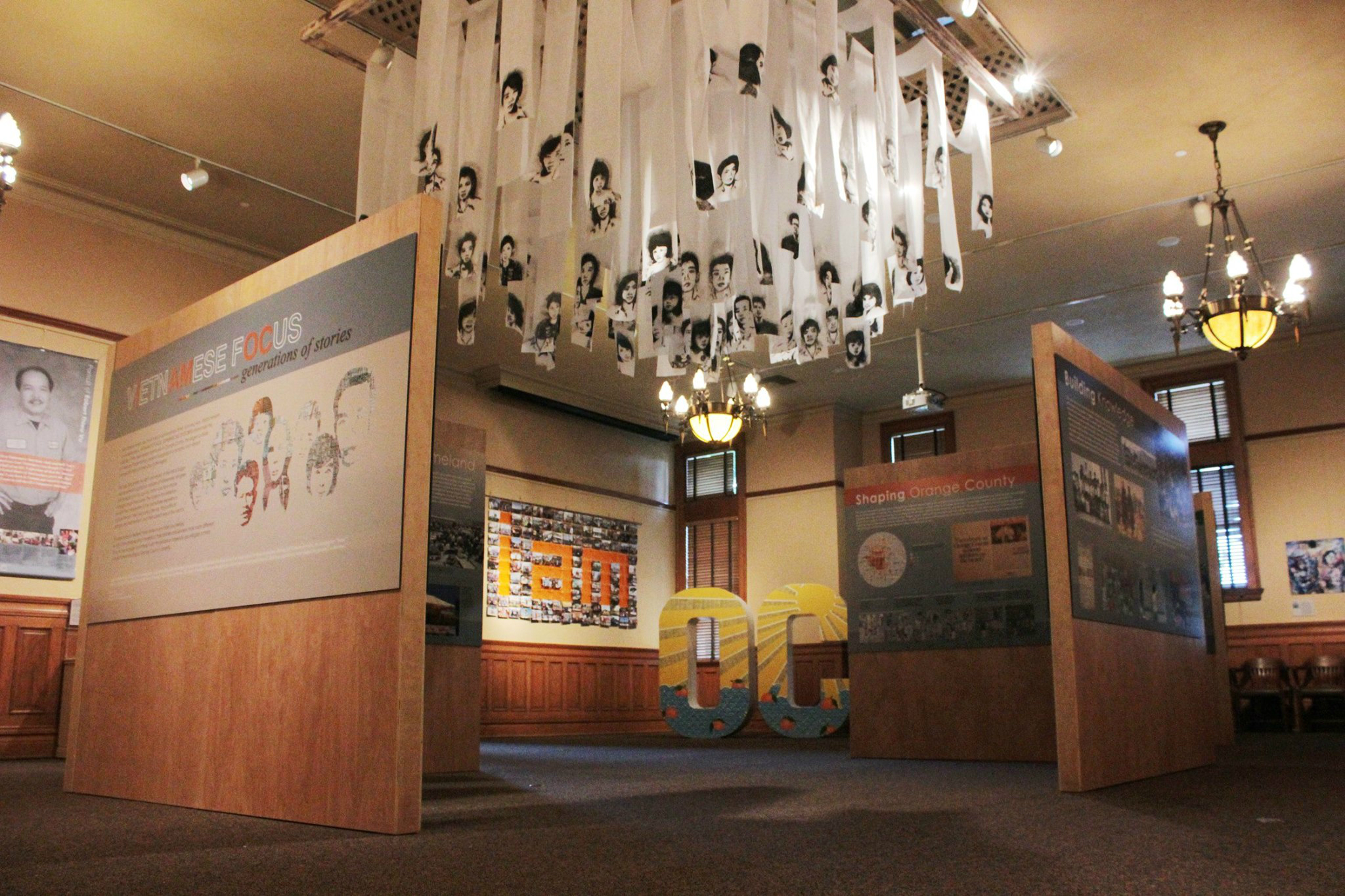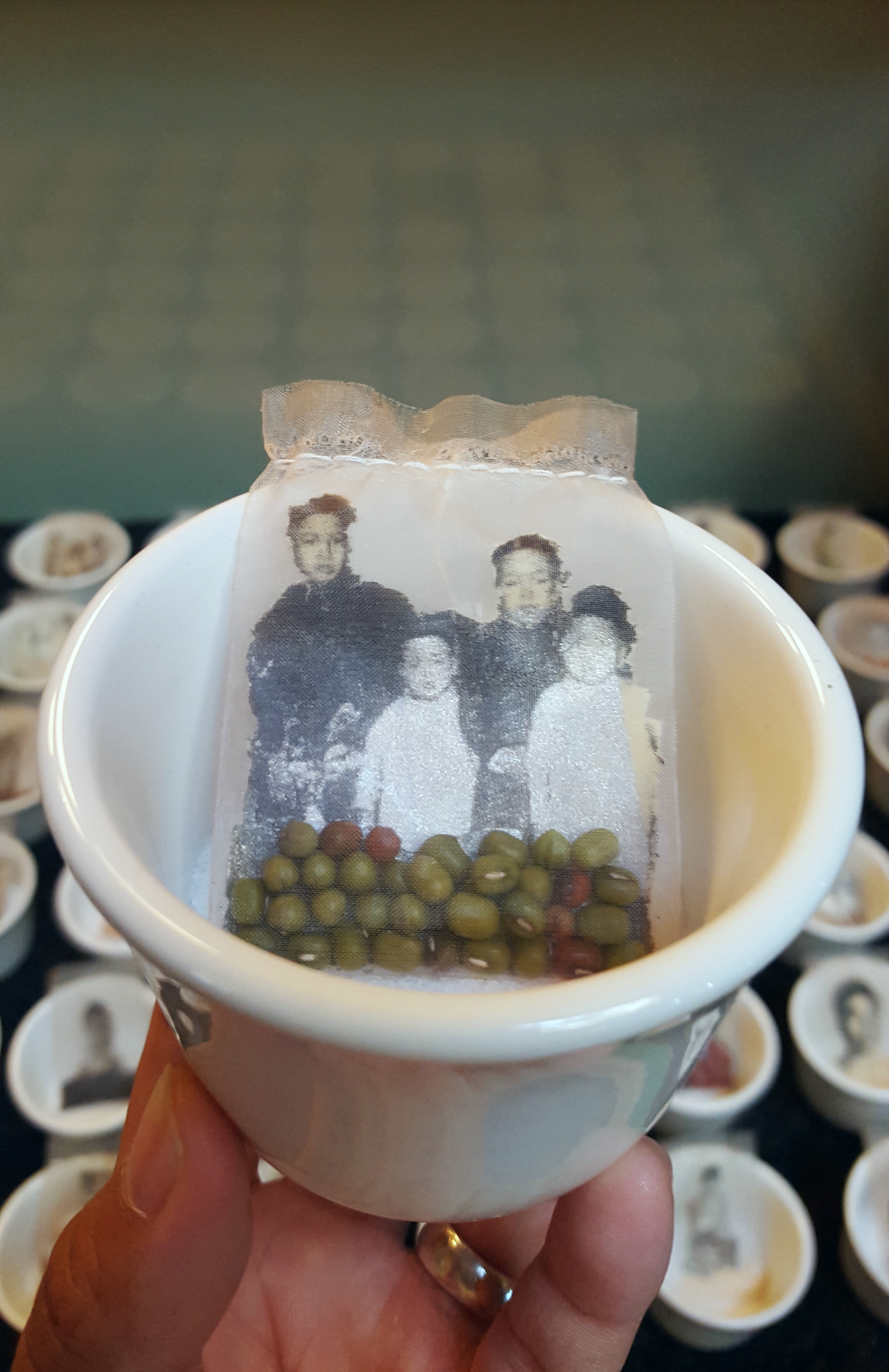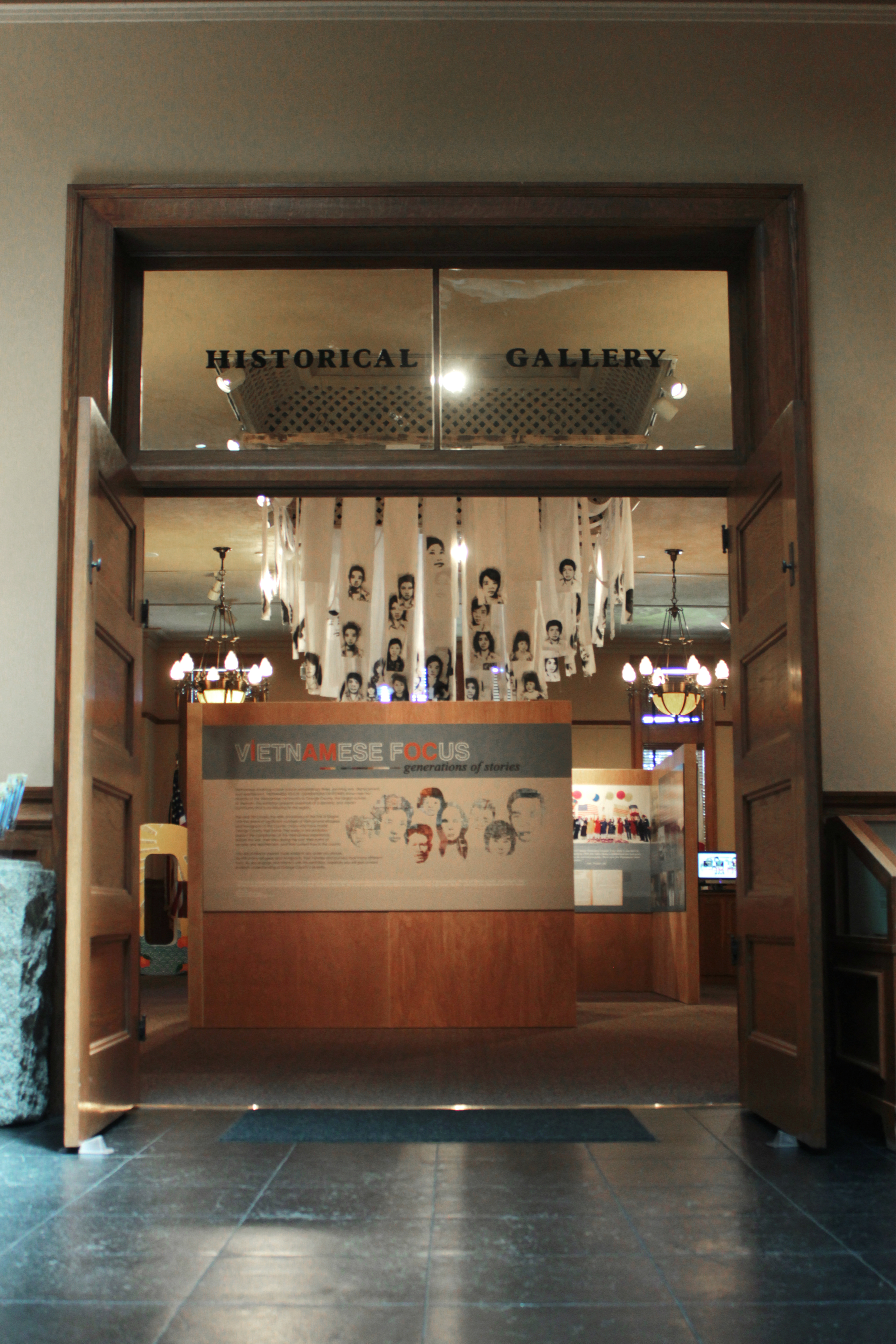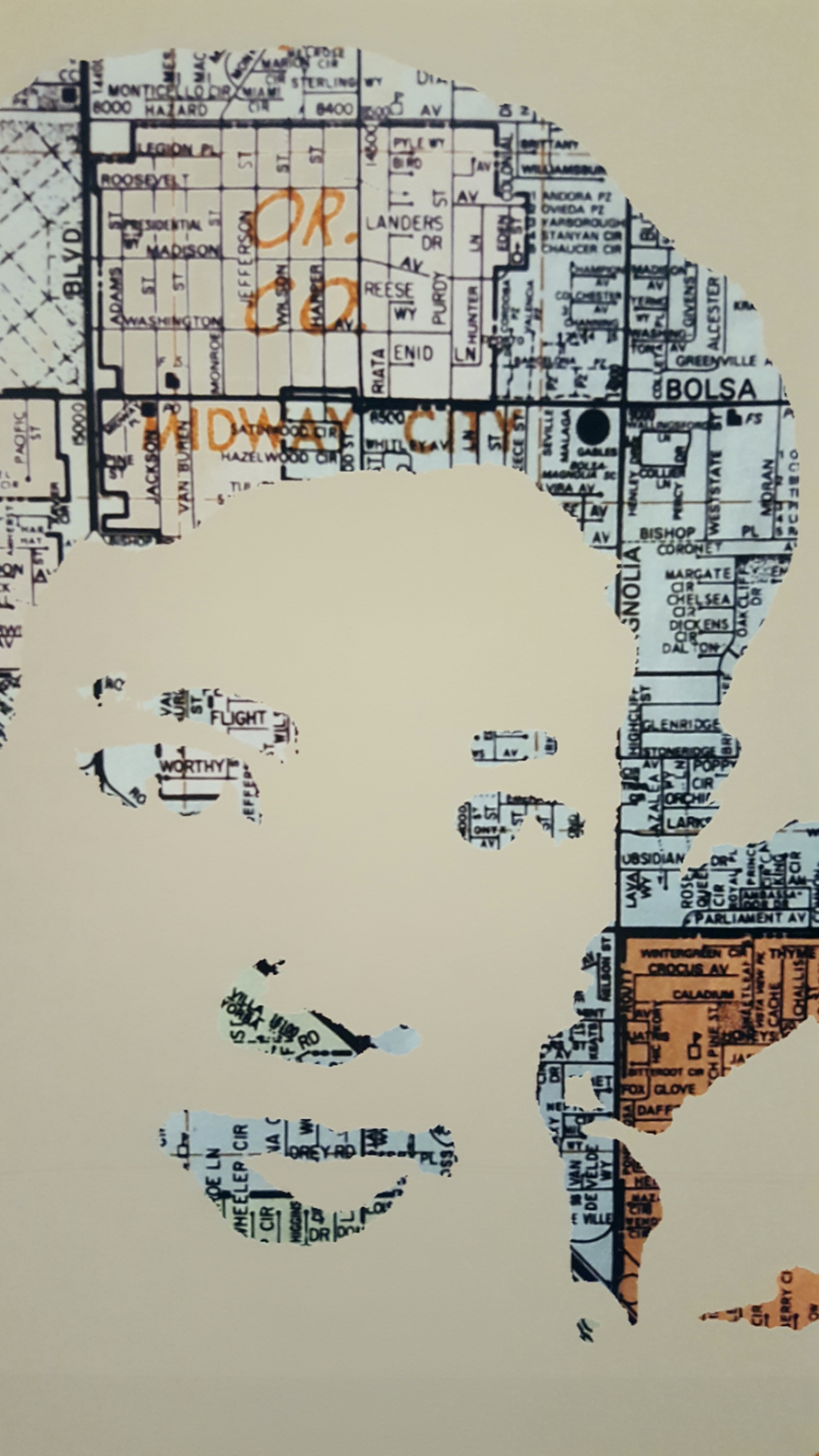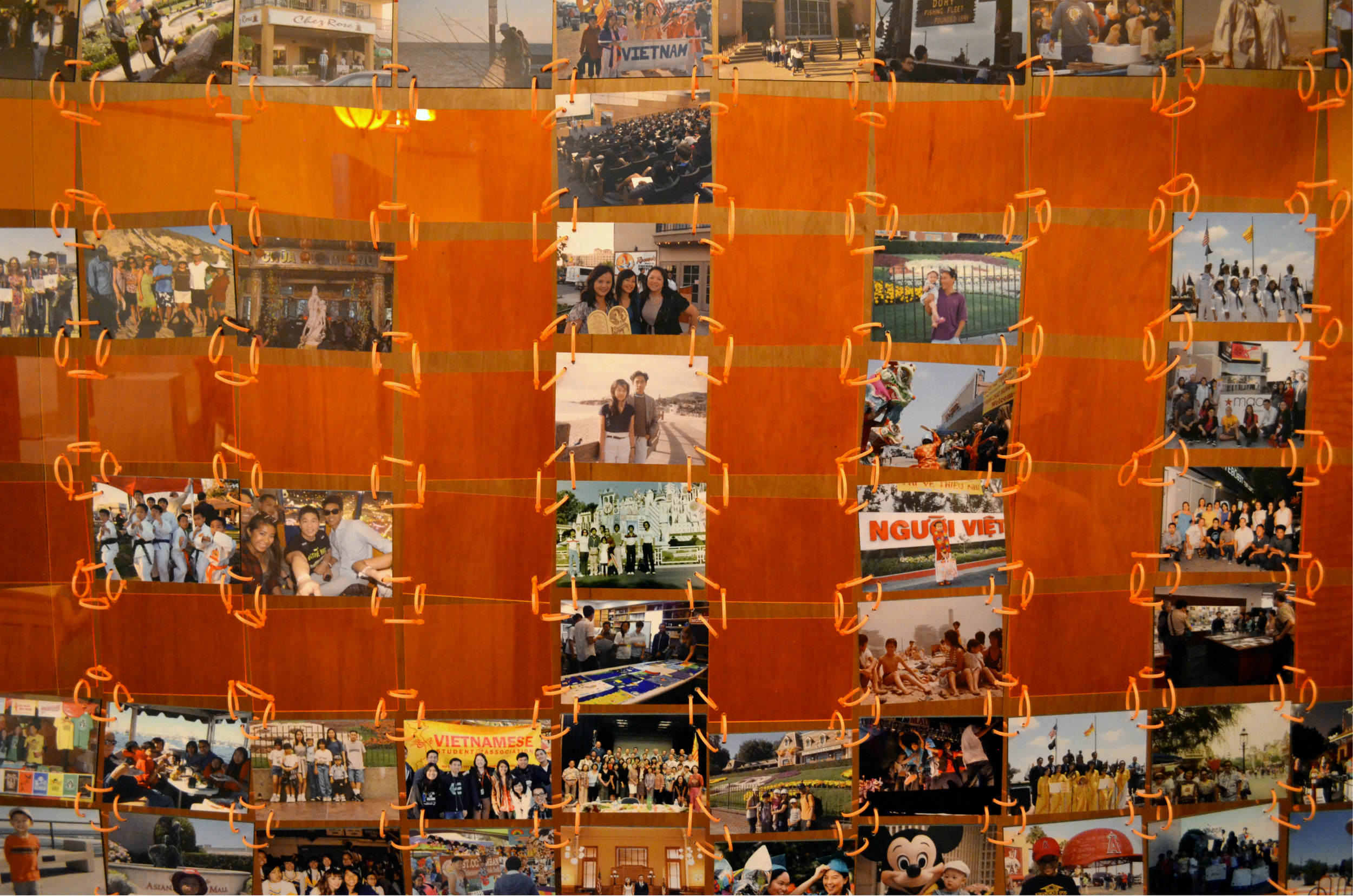Generations of Stories
In the winter of 2014, Curators Dr. Linda Trinh Vo and Tram Le offered me the humbling, daunting, and awe-inspiring task to peruse through the rich information provided by the University of California Irvine's Vietnamese American Oral History Project (VAOHP) and Orange County & Southeast Asian Archive (OC&SEAA), to find what inspires me, and to recount through art, the personal, unique, and diverse stories that are shared by our Vietnamese American community. VIETNAMESE FOCUS: Generations of Stories is a unique traveling exhibition, its inaugural showing created in partnership between VAOHP and Orange County Parks. This exhibition brings together history, oral history, and contemporary art to tell about our lives before the war, our courage during the war, and our drive to rebuild after the war, and the perseverance which allows us thrive. In commemoration of the 40th year anniversary of the fall of Saigon, our team is proud to present this show to our communities in Orange County and beyond, as we express a great deal of gratitude to those who have supported us along this edifying journey. We dedicate this to you.
The following ten works were on display as part of the exhibition, six of which were made especially for VIETNAMESE FOCUS and belong in the collection of UC Irvine’s Vietnamese American Oral History Project.
Quiet, 2015, Ink on voile, 9 x 144" each sash; installation dimensions variable
The creation of this piece called for the quiet spaces in which I worked, in reverence of these lives lost. I contemplated the quiet that came before the storm, which funneled so tightly around our people. The quiet in which they walked, treading on dead leaves and the detritus of life around them. The voices that were made to quiet in the jungles while hiding from enemy forces. The quiet in which they prayed to their God and to their Ancestors as they pled for their lives and the lives of those they loved. This quiet that heavily drapes over us when we gather to mourn the departed. The quiet in which prayer flags billow.
One of the funerary rituals in Vietnamese tradition is for the family members to wear white sashes upon their heads to signify their relationship to the departed. I have recreated these sashes to honor the lives of our mothers and fathers, sisters and brothers, aunts and uncles, daughters and sons, who were lost during the war. This piece was originally inspired by a collection of letters that I discovered at UCI Libraries Orange County & Southeast Asian Archive Center, letters that were written by family members, pleading for help to find their loved ones who went missing during the escape. Each portrait is raised up in respect for those who did not survive to see new shores. Upon them, I have retyped these letters as well as my own words to these individuals, using a typewriter that I’ve inherited from Cô Bé, my youngest auntie who also lost a brother during the war.
This piece is dedicated to the courageous individuals who risked their lives for the freedom into which I was born. [Read more about this piece]
The Stars Will Tell Us, 2015, Acrylic, charcoal, coffee, color pencil, gouache, graphite, ink, joss and tissue paper on cotton paper, 25 x 31”
In 1981, Trần Văn Dũng was hired as the captain of a boat that carried 80 Vietnamese refugees away from the bloodshed of their fallen Sài Gòn. During their three-day, two-night escape across the Gulf of Thailand, their boat was raided four times by Thai pirates. During the fourth attack, the pirates stole Mr. Trần’s golden compass. To compensate, one of the pirates wrote on his map the coordinates that would help bring them to land—"You go to 230 degrees". With only these notes on hand, the captain was able to use the constellations overhead to navigate their way to the shores of Songkhla, Thailand, where they arrived in the dark of night.
The stars—these bright lights that shine upon us to offer a deeper understanding of the things that might not be seen otherwise. Like the stars that guided their boat to safety, Mr. Trần’s testimony brings light to this historical event, this story of human courage and the arrival of a people. His willingness to share this tumultuous and triumphant experience enlightens what we can now know to be a lived history.
Created upon a replica of the original map that he has carried with him all these years, this piece pays respect to the experiences that Chú Dũng and countless other Vietnamese refugees survived and lived to tell about.
The Things We Carried, 2015, Acrylic and various objects on wooden blocks, resin, displayed in suitcase, dimensions variable
Starting in 1975, thousands of Vietnamese refugees and immigrants arrived on America’s shore. Many of them were forced to leave Vietnam at a moment’s notice and were only able to take with them a selection of the things that they deemed most valuable.
This piece begs the question, "If you had to leave immediately from the place that you call home to a foreign land, not knowing if you would ever return, what are some of the things that you would take with you?" It invites the viewer to take part in the journey, and asks them to take a moment to consider the things that they might consider most valuable by placing their selections into the suitcase. Only 8 items can be selected from the objects on the blocks, so they are encouraged to choose wisely, like so many refugees were forced to do.
Strength in Numbers, 2015, Beans, pepper, rice and resin in ceramic bowls, coffee, ink, leaves, paper, and twine, mounted on wood, 24 x 24"
Eight bowls are offered upon serving tray like chè, a traditional Vietnamese dessert, arranged like a clock, documenting the passage of time. They help give a visual depiction of the growth of the Vietnamese population in the United States. Each bean, seed, or grain represents 500 people.
Approximate population from 1950 through 2015:
1950 290
1960 3,000
1975 125,000
1980 250,000
1990 600,000
2000 1.1 million
2010 1.5 million
2015 1.8 million
Begins with Tea, 2013, joss paper, grains, seeds, herbs, dried noodles in tea bags, 4 1/2 x 1 3/4" each tea bag, placed upon a bed of jasmine tea
[Learn more about this series]
Biển, Biến, Biên (The Ocean, to Vanish, to Note), 2013
Charcoal, acrylic, and joss paper on stone, coconut shells, burlap, tree bark, tree branches and rice sacks, place on leaves and resin, approximately 8 ½”h x 5”w x 3 ¾”d each
[Learn more about this series]
Family Tree, 2011, mixed media on panel, 5 ½ x 4” each panel, placed upon a bed of jasmine rice [Learn more about this series]
We Have Arrived, 2015, Digital art for title wall (Text banner and layout designed by James Dinh, Introduction by Tram Le)
In the ancient Vietnamese language of chữ nho, also known as Confucian script, the word bát translates to both “the number eight” and “prosperity.” Like windows to the past, present, and future, these eight portraits of my family members reveal the streets of Orange County which have guided us along our journey in making our home away from home—a place where we as a people have thrived for generations.
I AM OC, 2015, In collaboration with Aaron Kokesch, James Dinh, Linda Trinh Vo, Lisa Le, and Tram Le
I AM (installation): Acrylic tiles, zip ties, photographs donated to the OC&SEAA, collected by the Vietnamese American Oral History Project at UC Irvine
OC (sculpture): Acrylic and collage using the Vietnamese Yellow Pages of Orange County on wood
Although the majority of Vietnamese Americans are primarily first generation, they and their descendants are leaving an indelible mark on an ever-evolving Orange County. Regardless of where we came from or the journeys that brought us here, our lives are forever etched into the durable landscape. Our past, our futures are intertwined with all those who call the OC a place of belonging.

